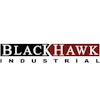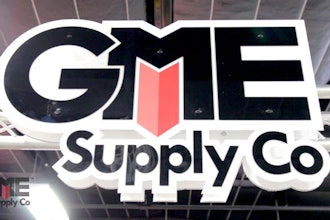12012 State of B2B E-Commerce Whitepaper
Executive Summary
As digital commerce has trans-
formed all commerce over the last
decade, customers have been
offered increasing control over their
buying experience. Ease of use, mobility, and
consumerization of technology has increased
customer demand for curated and personalized
experiences, whether it is business or consumer
commerce. But where is the biggest gap in
meeting these demands?
It is in the B2B marketplace (specifically the purchasing process
between business professionals and their suppliers), which is
being pressed to offer the kind of digital experiences that
shoppers in the consumer marketplace now take for granted.
This paper provides insights into the preferences of today’s
procurement professionals or business professionals that buy
products on behalf of their company, and offers strategic guidance
on the required commerce technology capabilities and potential
operations improvements that emerge from these insights.
According to hybris’ 2012 State of B2B E-Commerce study, the
vast majority of B2B procurement specialists prefer suppliers
that provide both digital commerce and traditional physical
commerce (e. g., print catalogs, sales reps and call centers)
over providers that offer only traditional sales channels.
However, most buyers indicate that the quality of the B2B
e-commerce experience is inferior to what they have grown
accustomed to as consumers, highlighting gaps in digital
capabilities between shopping experiences in B2C commerce
and procurement processes in B2B commerce.
Despite similarities, there are differences in scale and complexity
between B2C and B2B e-commerce strategies, particularly
in dedicated service for customer relationships and customized
2012 State of B2B E-Commerce
22012 State of B2B E-Commerce Whitepaper
Biggest drawbacks of ordering
from a print catalog
transactions. The complexity to support the B2B ecosystem,
which often varies by industry verticals, presents important
challenges that must be addressed through a combination of
commerce technology solutions and operational capabilities.
Going forward, having digital commerce capability that is
seamless with physical commerce will be a core, defining factor
for B2B success. In addition to generating revenues and margin
improvements through better tailoring to customer needs, there
is clear potential for cost efficiencies and productivity gains that
come with a well structured and thought-out e-commerce
strategy. This enables B2B vendors to take advantage of
marketplace opportunities that are simply beyond the scope
of traditional sales and service interactions.
By investing in a first-rate digital commerce experience, B2B
decision-makers can equip their organizations with the tools
they need to meet their customers’ increasing expectations.
B2B Procurers Prefer
Suppliers with an
E-Commerce Channel
Data from the hybris 2012 State of B2B E-Commerce study
shows that online and mobile channels are extremely important
to procurers and supplier relations professionals, underscoring
the need for B2B vendors to embrace digital selling strategies.
1. Online Purchasing
→ According to the study, 81 percent of B2B procurers would
choose a supplier that offers an online ordering option over
an equal supplier that only offers print catalog ordering.
The preference for online purchasing vehicles is especially
relevant in enterprise organizations. More than four out of
five procurers with budgets in excess of $1 million indicate
that they favor suppliers that offer online ordering. When
asked why they prefer e-commerce suppliers, B2B buyers
reported that online purchasing enables them to conduct
business at their convenience, to save time and to easily
monitor the status of their order.
→ The quality of the B2B e-commerce buying experience is
also important to procurers – 89 percent believe that the
online purchasing experience should be just as compelling
and easy as it is for consumers. This figure increases to 91
percent for B2B procurers with budgets over $1 million.
→ However, procurers are not completely satisfied with the
current state of B2B e-commerce. Survey data indicates
that 94 percent of buyers believe suppliers need to invest
more in making the online purchasing experience as easy
as consumer websites.
2. Mobile & Social Channels
→ Other findings from the research demonstrate the connec-
tions between online procurement, social media and mobile
technology. Armed with the latest mobile devices, procurers
have the ability to forge anytime, anywhere connections with
suppliers. Statistically, 89 percent of procurers who own a
smartphone research purchases through vendor websites
and three in five perform research on outside websites like
Amazon Supply or eBay.
→ The popularity of mobile and online technologies offers
convenience while providing opportunities for sales repre-
sentatives to enhance relationships with clients and custom-
ers. Although 85 percent of procurers find it easy to make
purchases online, the majority of procurers (87%) still rely
on the assistance of a sales rep to make purchases.
→ B2B procurers who embrace mobile technology are equally
adept at using social media. Seventy-eight percent of procur-
ers who own a smartphone use social media more than once
a week and 49 percent use social media at least once a day.
B2B buyers want the ability to make purchases online. As the
demand for web-based procurement options continues to grow,
any business with a B2B component will need to have a go-to-
market strategy that includes an e-commerce channel. Addition-
ally, B2B companies must address the growing opportunity and
preference for a mobile channel and social media interaction.
Source: hybris 2012 State of B2B ecommerce study
Catalogs are outdated
Difficulty finding product information
(too many products to sort through)
Difficulty tracking orders
Difficulty placing orders
Difficulty tracking inventory
32012 State of B2B E-Commerce Whitepaper
information across all channels in real-time. The e-commerce
platform should integrate with the organization’s ERP solution
to populate the system with rich product data and other
information. The addition of rich media to further enhance
the marketing of B2B products online also requires a data
repository capable of supporting this type of product content.
It must also be adept at providing rich media across multiple
channels and geographies. For example, an electrical
wholesaler that discovers the specifications for a certain
insulated wiring product have changed should be able to
update product information in a single location and know
that the new specs will seamlessly transfer to the
company’s mobile website, traditional website, catalog,
sales reps’ mobile tablet and other product access points.
→ Personalized Experiences. In the consumer online
marketplace, individuals expect highly personalized buying
experiences. Since B2B procurers are also individual
consumers, they expect relevant, personalized experiences
from their online B2B suppliers. Strong e-commerce
platforms include advanced features that allow buyers to
check personalized pricing, view order status, track order
history, receive customized promotions based on previous
offers/orders and perform other personalized activities.
Personalization strategies are a key differentiator for B2B
suppliers to create and scale customized relationships.
For example, if the sales representative offers to supply a
product at a unique price to a specific customer, the sales
rep should be able to go online – including face-to-face
situations using a mobile tablet or smartphone – and modify
the customer’s order to ensure that conversation is recorded
digitally. This personalized experience builds the foundation
for an ongoing relationship between buyer and seller.
→ Order Management & Fulfillment. Seasoned B2B firms
recognize that closing a sale is only part of a successful
B2B buying experience. The company’s ability to effectively
manage orders is a determining factor in the quality of the
B2B customer experience. In fact, order status is probably
one of the most critical components that buyers require in a
B2B procurement scenario. B2B suppliers have traditionally
used back-office systems for tracking inventory and orders,
and these processes must change before they become
customer-facing. In addition to offering customers a variety
of shipping and return options, first-rate e-commerce
technology should integrate with inventory management
systems to provide a universal view of stock levels and
streamline the organization’s entire fulfillment process.
This information must be available to buyers at any time
and just as importantly, in real-time – providing on-demand
visibility to delivery schedules, inventory levels and other
insights that are essential to the buyer’s operation.
→ Speed-to-Market. In the B2B sector, speed-to-market
translates into competitive advantage. With so much at stake,
B2B e-commerce technology has to address one of the fatal
flaws in a physical environment where print catalogs become
out of date as new product introductions, or discontinuations,
Crafting an E-Commerce
Strategy
The creation of a truly robust e-commerce program is critical for
companies that compete in the B2B space. To drive sales and
maximize the return on digital commerce investments, firms
must create online experiences that rival the best B2C e-com-
merce experiences while complementing their existing physical
commerce infrastructure. Consequently, B2B companies need
to focus on a dual approach that emphasizes technological
capabilities and operational improvements across the organization.
Technological Capabilities
Technology is the engine that drives successful B2B e-commerce.
When evaluating candidate technologies, it’s important for
company decision-makers to identify advanced features that
improve customer experiences and generate additional positive
outcomes for the business.
→ Seamless Channel Integration. E-commerce cannot be
separated from the rest of the enterprise; it must be viewed
in the context of the company’s physical commerce operations.
The best B2B e-commerce platforms offer features that
promote commerce integration, coordinating e-commerce
with the company’s other online and offline sales channels.
To deliver on an omni-channel strategy, the solution must
offer real-time, consistent product information, inventory
availability, order status, and seamless customer experi-
ences across multiple touchpoints that are tailored to the
B2B procurer’s specific needs. Pricing and messages that
customers receive from conversations with sales represen-
tatives must be reflected when they access or purchase the
product online, ensuring consistency across the brand’s
diverse channels and touchpoints.
→ Centralized Management of Product Data. Compared to
sellers in the consumer marketplace, B2B companies
utilize exceptionally large and detailed product catalogs.
The volume and complexity of product data create new
challenges for online sales, which requires the use of
e-commerce technology that can distribute updated product
42012 State of B2B E-Commerce Whitepaper
are rolled out faster than catalogs can be distributed. The
complementary nature of e-commerce allows a company
to quickly and accurately roll out new products or product
lines and to notify likely customers in a timely manner.
→ Global Ready. If the company’s e-commerce strategy
includes multi-country B2B sales, e-commerce technology
will need to be capable of servicing the particular needs of
regional markets. Common global ready features include
multiple language support and transactional features
capable of effectively managing local currencies, national/
regional taxes and geo-specific regulations.
Operational Effectiveness
Technology is just part of the B2B e-commerce equation. Busi -
ness processes and an awareness of operational effectiveness
opportunities must also be in place to maximize the impact of
e-commerce technologies.
→ Revenue Conversions. The right e-commerce strategy
provides B2B sellers with opportunities to dramatically
improve conversions – often through the extended service
hours and product alternatives that are enabled for custom-
ers and sales teams. An example of this is a major whole-
saler that markets to small chains. After implementing a
commerce platform, order volume will increase substantially
when customers are given the ability to shop online during
non-business hours. Also, if buyers were presented with an
out-of-stock item, the platform can present them with an
alternative product, rather than simply ending the sale.
→ Margin Enhancements. With the improved tailoring and
update frequency of online catalogs, along with personalized
content in email and other communications, B2B sellers can
manage margins more effectively throughout a product’s
lifecycle, for example, giving selected customers early access
to new products at peak margins while also reducing margin
reductions on pending discontinuations by offering deals that
clear out products prior major discounts at end of life.
→ Customer Retention. E-commerce presents can also help
B2B sellers improve customer retention by giving custom-
ers value-added benefits. Customer self-service tools like
how-to videos or project management resources can be
seamlessly integrated into the company’s e-commerce
ecosystem, strengthening a customer’s relationship with
the business. Such capabilities also give sales reps more
time to communicate with customers in value-added,
consultative manner that anticipates customer needs.
→ Streamlining and Automating Workflows. Since many B2B
sales processes involve complex and company specific
workflows, B2B e-commerce has the potential to stream-
line them through automation and integration. For example,
if the company currently receives orders by fax, phone and
sales reps, a robust e-commerce platform can automate
the process and streamline a common organizational
workflow. As B2B e-commerce is implemented, change
management must also be put into place across all
departments in the organization in order to easily adopt
and embrace an e-commerce site.
→ Cost Efficiencies. In most cases, cost efficiencies are
one of the primary payoffs of e-commerce investments.
If investments are supported by a carefully crafted e-com-
merce strategy, the company can enhance customers’
online buying experience while simultaneously reducing
costs in call centers, customer service departments and
other areas. Rather than spending time administrating
customers, sales reps can devote more time to identifying
and converting new customers, further improving the
company’s bottom line performance.
Source: hybris 2012 State of B2B ecommerce study
Print vs. Online
When you order supplies for your business,
how easy is it to …
Print Online
Easy or
Very easy
Find Product Information Track Orders
70.7 %
62.7 %
84.4 % 88.6 %
Online B2B e-commerce advantages
Do you think the following are advantages of ordering
products from suppliers’ websites?
Able to do business with
my suppliers when it’s
convenient for me
Able to save time
Better informed about
the status of my order
Better informed about
the products I am
purchasing
Alerted to products
I was not aware of
Yes No
89.4 % 10.6 %
84.6 % 15.4 %
80.7 % 19.3 %
76.5 % 23.5 %
71.6 % 28.4 %
52012 State of B2B E-Commerce Whitepaper
Summary
The B2B e-commerce revolution is being driven by business
procurers’ preference to use online technologies and self-ser-
vice features to enhance the buying experience in a complemen-
tary manner to their existing physical commerce relationships.
Addressing the complexity of product information and custom-
ized customer transactions with digital commerce capabilities
differentiates a B2B seller. This is done in much the same way
as the best B2C companies manage their brand and consumer
engagement in a highly personalized manner that generates
greater customer loyalty and improved customer satisfaction.
However, buyer demand isn’t the only dynamic behind the
e-commerce trend among B2B businesses. Increased revenue
potential, higher or preserved margins, improved retention
rates, streamlined workflows, and cost efficiencies all present
opportunities that B2B organizations can leverage for competitive
advantage.
Going forward, a successful go-to-market strategy for many
B2B companies lies in the ability to seamlessly integrate digital
and physical commerce. The digital wave has arrived and as the
results of the 2012 B2B E-Commerce study show, procurement
executives clearly favor companies that embrace digital
commerce solutions in their business models. For such are the
tools required to be competitive and differentiated in today’s
fast-paced and customer-centered B2B sales environment.
About the 2012 State
of B2B E-Commerce Study
The 2012 State of B2B E-Commerce study contains results
from 224 B2B procurement specialists on their preferences
for conducting business through suppliers across a variety
of channels. Respondents consisted of those with budgets
ranging from less than $100,000 to greater than $5 million.
As the top-rated provider of omni-channel commerce software,
hybris works with many well-known B2B brands to enhance their
omni-channel commerce capabilities.. As the use of online
strategies has dramatically increased in the B2B sales process,
hybris conducted this study to provide insights into the preferences
of today’s procurement professionals and offers strategic guidance
on the required commerce technology capabilities and potential
operations improvements that emerge from these insights.
About hybris software
hybris software, an SAP Company, helps businesses around the globe sell more goods, services and digital content through every touchpoint, channel and
device. hybris delivers OmniCommerce™: state-of-the-art master data management for commerce and unified commerce processes that give a business a
single view of its customers, products and orders, and its customers a single view of the business. hybris’ omni-channel software is built on a single platform,
based on open standards, that is agile to support limitless innovation, efficient to drive the best TCO, and scalable and extensible to be the last commerce
platform companies will ever need. Both principal industry analyst firms rank hybris as a “leader” and list its commerce platform among the top two or three in
the market. The same software is available on-premise, on-demand and managed hosted, giving merchants of all sizes maximum flexibility. Over 500 companies
have chosen hybris, including global B2B sites W.W.Grainger, Rexel, General Electric, Thomson Reuters and 3M as well as consumer brands Toys“R”Us, Metro,
Bridgestone, Levi’s, Nikon, Galeries Lafayette, Migros, Nespresso and Lufthansa. hybris is the future of commerce™. www.hybris.com | [email protected]
Version: December 2013 Subject to change without prior notice © hybris
hybris is a trademark of the hybris Group. Other brand names are trademarks and registered trademarks of the respective companies.
The State of B2B E-Commerce
This report provides insights into the preferences of today’s procurement and business professionals that buy products on behalf of their company and offers strategic guidance on the required commerce technology capabilities and potential operations improvements that emerge from these insights.
Latest in Home
ABB to Invest $110 Million in 4 U.S. Plants
September 17, 2025
BlackHawk Adds McNutt as Northeast Region GM
September 16, 2025


















